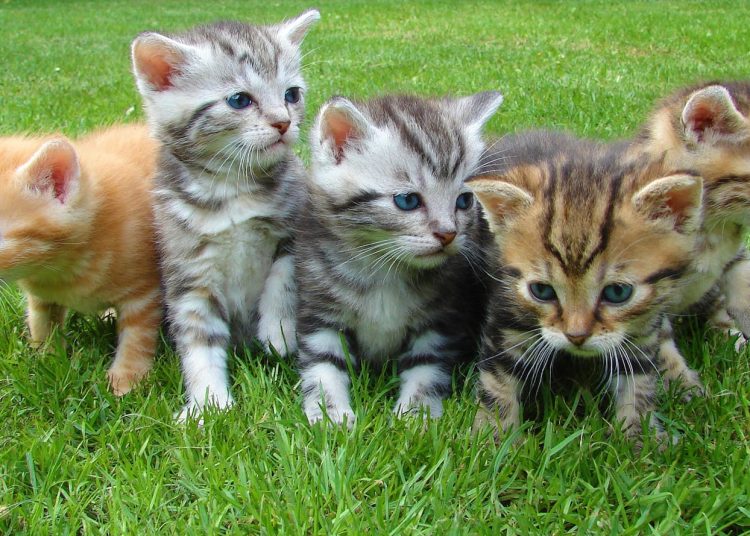Cats are beloved members of the family, and as pet parents, we want to make sure our furry friends receive the best care possible. Veterinary costs can be a major concern for cat owners, especially when faced with unexpected emergencies or chronic health conditions. Pet insurance is an option that provides peace of mind, ensuring that you can give your cat the care they need without breaking the bank. In this guide, we’ll provide a complete overview of pet insurance for cats, including different types of coverage, factors to consider when choosing a plan, and helpful tips for getting the most value from your policy.
Why Consider Pet Insurance for Your Cat?
Veterinary care has made significant advances over the years, offering treatments that help cats live longer, healthier lives. However, these medical advancements come with higher costs. From emergency surgeries to chronic health conditions like kidney disease or diabetes, veterinary expenses can add up quickly. Pet insurance offers a way to manage these costs, making high-quality care more accessible. It allows you to make medical decisions based on what is best for your cat, rather than on the cost of care.
Types of Pet Insurance Coverage for Cats
When looking into pet insurance, it’s important to understand the different types of coverage available. Pet insurance for cats generally falls into one of three categories: accident-only coverage, accident and illness coverage, and comprehensive coverage that includes wellness care.
1. Accident-Only Coverage
Accident-only coverage is the most basic type of pet insurance. It covers injuries that occur as a result of accidents, such as broken bones, cuts, or ingestion of foreign objects. Accident-only plans are ideal for cat owners who want an affordable option to cover emergency situations but do not need coverage for illnesses or preventive care. This type of plan is often less expensive but may leave you financially exposed if your cat develops an illness.
2. Accident and Illness Coverage
Accident and illness coverage is the most common type of pet insurance for cats. It provides protection for both accidents and a wide range of illnesses, from minor infections to more serious chronic conditions such as kidney disease, diabetes, and respiratory issues. This type of plan is a good choice for cat owners who want more comprehensive protection against unexpected medical issues.
3. Comprehensive Coverage (Including Wellness Care)
Comprehensive coverage provides the most extensive protection, covering accidents, illnesses, and routine wellness care. Wellness care typically includes vaccinations, annual check-ups, flea and tick prevention, and dental cleanings. Although comprehensive plans come with higher premiums, they help cover the cost of routine preventive care, which is essential to maintaining your cat’s health. If you want to ensure that your cat receives preventive care in addition to emergency medical coverage, a comprehensive plan may be worth considering.
Factors to Consider When Choosing Pet Insurance for Your Cat
Choosing the best pet insurance plan for your cat requires careful consideration of several key factors. Here are the most important things to keep in mind:
1. Your Cat’s Age and Breed
The age and breed of your cat can significantly impact the type of coverage they need. Older cats are more prone to developing health problems, and certain breeds have specific genetic predispositions to particular conditions. For example, Persian cats are known for their respiratory issues, while Maine Coons are susceptible to heart disease. Understanding your cat’s health risks can help you choose a plan that provides the most appropriate coverage.
2. Coverage Limits
Pet insurance plans often come with coverage limits, which can be annual, per-incident, or lifetime limits. It’s important to understand these limits before purchasing a plan, as they determine the maximum amount the insurance company will reimburse for veterinary expenses. Some plans offer unlimited coverage, which is particularly beneficial if your cat develops a chronic condition that requires frequent treatment.
3. Deductibles and Reimbursement Rates
Deductibles are the amount you must pay out-of-pocket before your insurance coverage kicks in. Deductibles can be annual or per-incident, and selecting a higher deductible will typically result in a lower monthly premium. Reimbursement rates indicate the percentage of the vet bill that the insurance company will cover after you’ve met your deductible. Common reimbursement rates range from 70% to 90%. It’s important to choose a deductible and reimbursement rate that fit both your budget and your risk tolerance.
4. Waiting Periods and Exclusions
Most pet insurance plans have waiting periods before coverage begins. This means that any illnesses or injuries that occur within the waiting period will not be covered. Waiting periods can vary depending on the provider and the type of condition. Additionally, most pet insurance plans do not cover pre-existing conditions. It’s essential to understand the waiting periods and exclusions before committing to a plan.
5. Monthly Premiums
The cost of monthly premiums is an important consideration when choosing pet insurance for your cat. Premiums are determined by factors such as your cat’s age, breed, location, and the level of coverage you choose. While it may be tempting to select the plan with the lowest premium, it’s important to consider the coverage offered and whether it meets your cat’s health needs. A plan with a low premium may end up costing more in the long run if it doesn’t provide adequate coverage when you need it.
Key Features to Look for in a Pet Insurance Plan for Cats
When evaluating pet insurance plans for your cat, keep an eye out for the following key features to ensure that you choose the best coverage:
- Coverage for Hereditary and Congenital Conditions: Some breeds are more prone to hereditary or congenital conditions. Make sure the plan you choose covers these types of conditions, as the treatment for them can be costly.
- Chronic Condition Coverage: Cats can develop chronic conditions such as diabetes, kidney disease, or hyperthyroidism, which require ongoing treatment. Choose a plan that includes coverage for chronic conditions to ensure that your cat receives the care they need over their lifetime.
- Preventive Care Options: Preventive care, such as vaccinations, annual exams, and dental cleanings, is essential for maintaining your cat’s health. Look for a plan that includes wellness coverage to help cover the costs of routine preventive care.
- Flexible Claims Process and Reimbursement Time: The claims process can vary significantly between providers. Choose a company that offers a straightforward claims process, ideally with online claim submission and quick reimbursement times.
Questions to Ask When Choosing Pet Insurance for Your Cat
To ensure that you select the best pet insurance plan for your cat, it’s important to ask the right questions. Here are some questions to consider when evaluating different plans:
- What Is Covered and What Is Not? Make sure you understand what is covered by the policy and what is excluded. Ask about specific conditions, treatments, and procedures that may not be covered.
- What Are the Coverage Limits? Find out whether the plan has annual, per-incident, or lifetime coverage limits. If your cat develops a chronic condition that requires ongoing care, coverage limits will determine how much support you’ll receive.
- How Does the Claims Process Work? Ask about the claims process, including how long it typically takes to receive reimbursement. Some providers offer direct payment to veterinarians, while others require you to pay upfront and then seek reimbursement.
- Are There Any Waiting Periods? Inquire about waiting periods for different types of coverage. Some conditions may have longer waiting periods than others, so it’s important to know when your coverage will begin.
Tips for Getting the Most Out of Your Cat’s Pet Insurance
To make the most of your cat’s pet insurance policy, consider the following tips:
- Enroll Early: The best time to enroll in pet insurance is when your cat is young and healthy. Most insurance providers do not cover pre-existing conditions, so enrolling early ensures that you have coverage in place if any health issues arise in the future.
- Choose the Right Deductible: A higher deductible will lower your monthly premium, but it also means more out-of-pocket expenses when your cat needs care. Choose a deductible that fits your budget and risk tolerance.
- Stay Up to Date on Preventive Care: Preventive care is essential for maintaining your cat’s health. Keeping up with routine vaccinations, dental cleanings, and wellness exams can help catch health issues early and prevent more serious (and costly) problems down the road.
- Understand the Policy Details: Take the time to read the policy details, including coverage limits, exclusions, and waiting periods. Knowing what is covered and what isn’t will help you avoid surprises when it comes time to file a claim.
Choosing the Right Provider for Your Cat
Selecting the right pet insurance provider is just as important as choosing the right plan. Research providers to find one with a strong reputation for customer service and timely claims processing. Reading customer reviews can provide insight into how well a company handles claims and supports its customers. Additionally, comparing different providers and plans will help you find the coverage that best suits your cat’s needs and your budget.
Pet insurance can be a valuable resource for cat owners, providing financial protection and peace of mind. By understanding the different types of coverage available, considering your cat’s specific needs, and asking the right questions, you can choose a pet insurance plan that ensures your feline friend receives the care they deserve, no matter what life throws their way.








